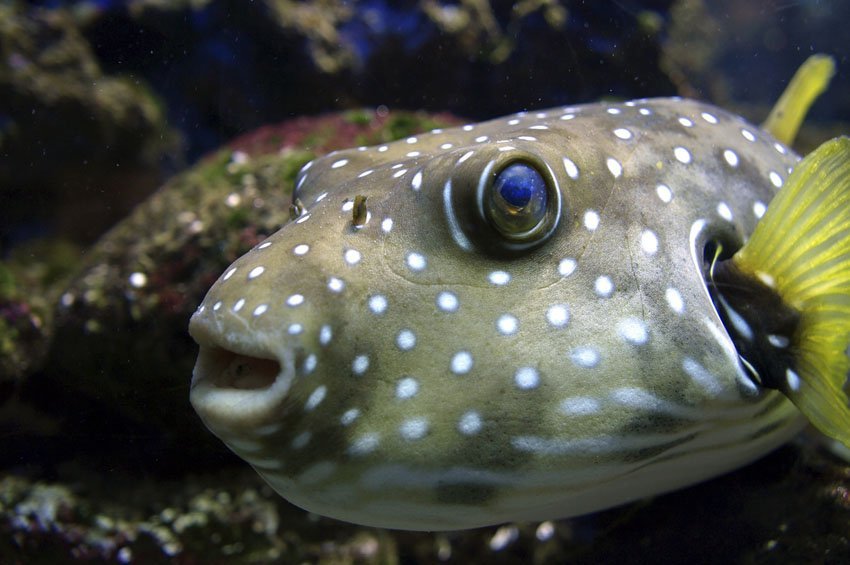Pufferfishes

Pufferfishes (Tetraodontidae) Overview
Pufferfishes are closely related to porcupinefishes. When threatened, they inhale water and expand into a balloon shape, which makes it difficult or impossible for a predator to swallow them. They differ from porcupinefishes in that their skin has bristles while porcupinefishes have sharp spines.
Pufferfishes, like porcupinefishes, are also poisonous. Their bodies have tetrodotoxin in them, a powerful neurotoxin. The toxin is produced by bacteria within their bodies.
In the Hawaiian language pufferfishes are known as makimaki. There are twelve species of pufferfishes in Hawaiian waters, of which three are endemic. They range in size from a few inches up to 3 feet (90 cm) and have strong jaws, sharp beaks and scaleless bodies with a single dorsal fin. They feed mainly at night.
Frequently Asked Questions
How do pufferfishes defend themselves?
Pufferfishes defend themselves by inflating their bodies with water, making them appear much larger and rounder. This deters predators and makes them difficult to swallow.
Are pufferfishes poisonous?
Yes. Pufferfishes contain tetrodotoxin, a powerful neurotoxin produced by bacteria in their bodies. It is lethal to humans, and there is no known antidote. Even a small amount can cause paralysis or death.
What's the difference between pufferfishes and porcupinefishes?
Pufferfishes have bristled skin and no sharp external spines, while porcupinefishes have large, rigid spines that protrude when inflated. Both can puff up and are toxic, but they belong to different families.
What is the Hawaiian name for pufferfish?
In Hawaiian, pufferfishes are called makimaki. They were sometimes observed with respect due to their unique appearance and defensive abilities.
Are pufferfishes nocturnal?
Yes, most pufferfish species in Hawaiian waters are active at night. They use their strong jaws and sharp beaks to feed on hard-shelled prey such as crustaceans and mollusks.








